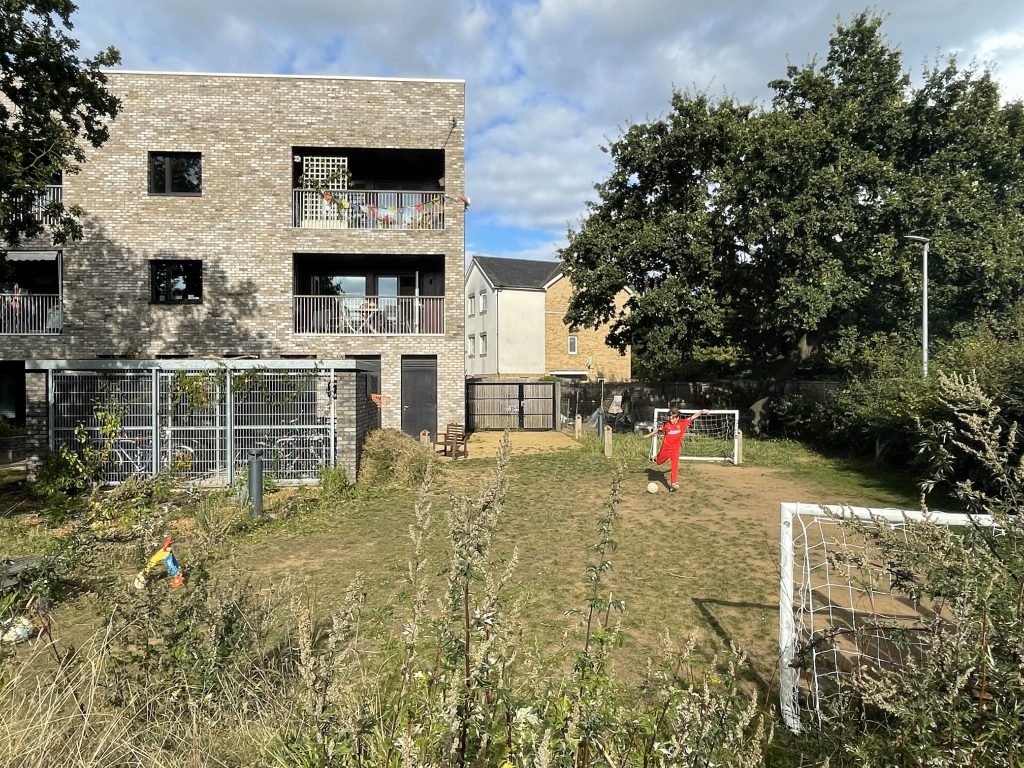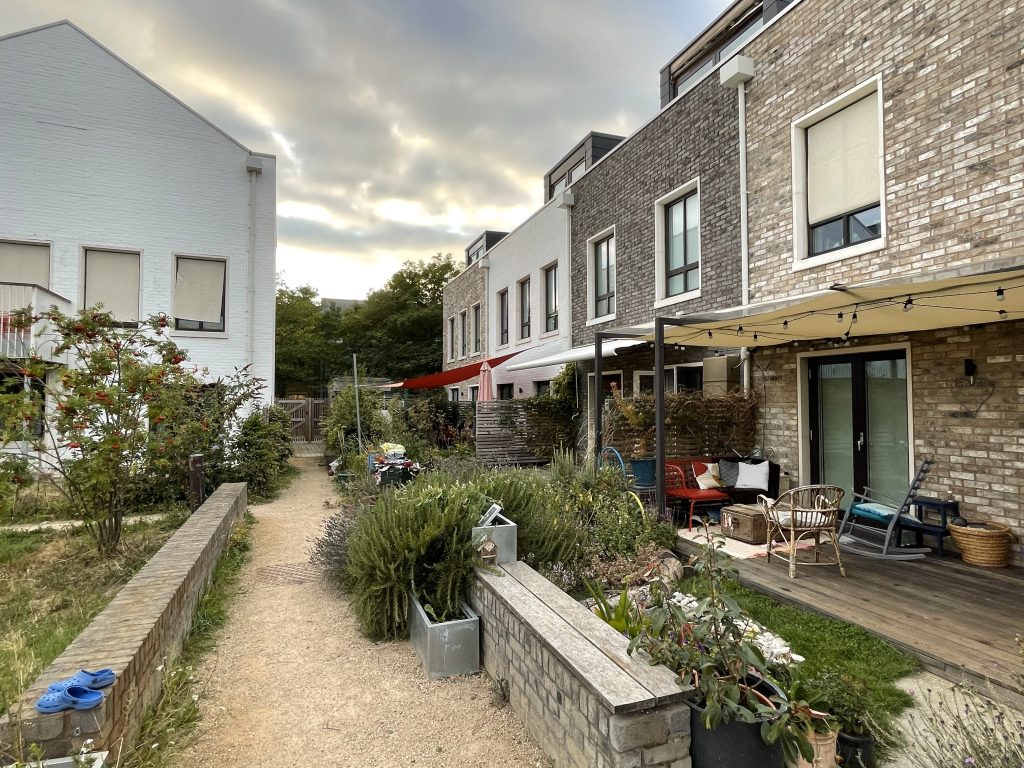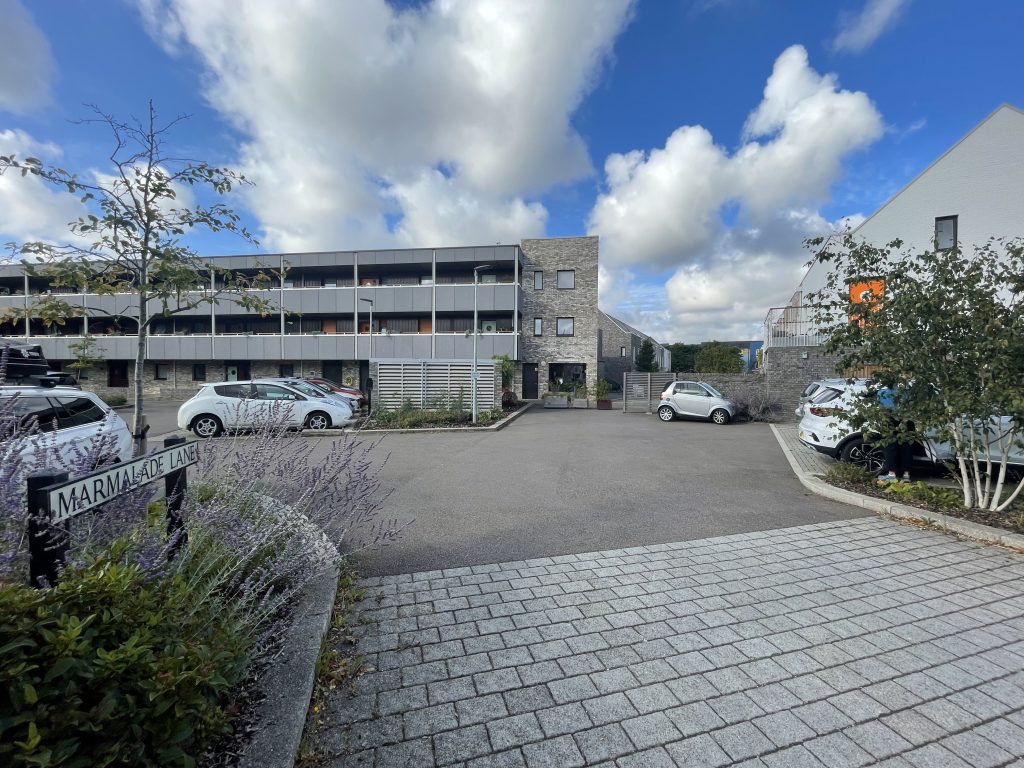Case Study: Marmalade Lane, UK – How a Council & its Citizens created a community – Together

Marmalade Lane in Orchard Park, Cambridge, UK, stands as a great example of modern cohousing – a community-driven approach to sustainable living. The 42 home multi-generational cohousing community was completed in 2018 and is a testiment to an innovative partnership approach between future residents (a community led cohousing group), the landowner (the local Council) and an innovative developer TOWN.
The project is an excellent case study of how a collaboration between local government, local residents and the private development sector can deliver impactful long term outcomes.
Last year I had the pleasure of visiting Marmalade Lane. My wife, son and I stayed overnight in one of the guest rooms and were hosted by resident and TOWN Head of Community Partnering, Frances Wright.
Having seen the built form outcome and talked with some of the residents, I hope it can inspire Australian local and state governments to be more visionary and innovative in how they can play a role as a catalyst and enable higher quality medium density outcomes in our middle ring suburbs.
In May 2024 we hosted a webinar & panel discussion with Frances Wright (Head of Community Partnering at TOWN) to hear more about this project. You can watch the webinar via the link at the bottom of this page.
“Imagine a world where homes were built according to the needs of residents rather than the profits of house builders, a place where land was allocated with the best long-term value in mind, rather than flogged off to the highest bidder, and where politicians’ claims of “creating communities” actually rang true. It might be something like Marmalade Lane in Cambridge” The Guardian
Below are a few key points that resonated with me from my trip.
Council's Involvement and Inspiration
Council representatives, influenced by a visit to Vauban in Freiburg, Germany, aimed to replicate the city's renowned sustainable urban living legacy. The result was that council didn't just offer land; they actively facilitated the project. Working with the resident group to understand their needs, Council ran a tender process for developers while simultaneously developing a master plan. Their goal was ambitious: to sell the land at market value while ensuring the homes were also sold at market rates, striking a balance between commercial viability, risk and community values.
Origins and Vision
Council identified a local community group of future residents who were keen to enable a cohousing project in Cambridge. Council provided grant funding to assist the community group to formalize and organise and then played a crucial role, by outlining and running a structured process to bring this vision to life.
The Winning Tender and Development Process
Council ran an EOI and RFP process with a number of developers/development managers. TOWN won the tender, with a Swedish timber cooperative as the main investor. This choice wasn't just about financial investment; it reflected a commitment to sustainability, given the cooperative's expertise in eco-friendly timber construction.
During the development phase most of the 42 homes were pre-sold 'off the plan' to around 30 members of the cohousing group. The remaining homes were sold in the open market, integrating the cohousing community with the wider public.
Community Design and Sustainable Living
While the project consists of 42 homes with a mix of sizes and typologies (apartments and townhouses), it is though the 'common house' that stands as the heart of the community. This space, designed for shared activities and gatherings, fosters a sense of community often missing in speculative developments.
What amazed me about the common house was that the Council was so committed to delivering on the vision, that the additional cost of this communal space was partially accounted for via a reduced land value charged by the Council to the developer, and therefore the future residents. An enlightened move from the Council that recognised how intrinsic this space was to the cohousing vision and the social value this space added to the community.
A Model for Future Developments
Marmalade Lane isn't just another housing project; it's a blueprint for future sustainable developments. It demonstrates how public and private sectors can collaborate effectively together and how community needs can be integrated into town planning and development outcomes by running a structured process to achieve an innovative vision.











